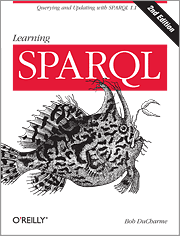Semantic Web adoption and the users by Lars Marius Garshol.
From the post:
A hot topic at ESWC 2013, and many other places besides, was the issue of Semantic Web adoption, which after a decade and a half is still less than it should be. The thorny question is: what can be done about it? David Karger did a keynote on the subject at ESWC 2013 where he argued that the Semantic Web can help users manage their data. I think he’s right, but that this is only a very narrow area of application. In any case, end users are not the people we should aim for if adoption of Semantic Web technologies is to be the goal.
End users and technology
In a nutshell, end users do not adopt technology, they choose tools. They find an application they think solves their problem, then buy or install that. They want to keep track of their customers, so they buy a CRM tool. What technology the tool is based on is something they very rarely care about, and rightly so, as it’s the features of the tool itself that generally matters to them.
Thinking about comparable cases may help make this point more clearly. How did relational databases succeed? Not by appealing to end users. When you use an RDBMS-based application today, are users aware what’s under the hood? Very rarely. Similarly with XML. At heart it’s a very simple technology, but even so it was not end users who bought into it, but rather developers, consultants, software vendors, and architects.
If the Semantic Web technologies ever succeed, it will be by appealing to the same groups. Unfortunately, the community is doing a poor job of that now.
…
Lars describes the developer community as being a hard sell for technology, in part because it is inherently conservative.
But what is the one thing that both users and developers have in common?
Would you say that both users and developers are lazy?
Semantic technologies of all types, take more effort, more thinking, than the alternatives. Even rote tagging takes some effort. Useful tagging/annotation takes a good bit more.
Is adoption of semantic technologies or should I say non-adoption of semantic technologies, another example of Kahneman’s System 1?
You may recall the categories are:
- System 1: Fast, automatic, frequent, emotional, stereotypic, subconscious
- System 2: Slow, effortful, infrequent, logical, calculating, conscious
In the book, Thinking, Fast and Slow, Kahneman makes a compelling case that without a lot of effort, we all tend to lapse into System 1.
If that is the case, Lars’s statement:
[Users] find an application they think solves their problem, then buy or install that.
could be pointing us in the right direction.
Users aren’t interested in building a solution (all semantic technologies) but are interested in buying a solution.
By the same token:
Developers aren’t interested in understanding and documenting semantics.
All of which makes me curious:
Why do semantic technology advocates resist producing semantic products of interest to users or developers?
Or is producing a semantic technology easier than producing a semantic product?
